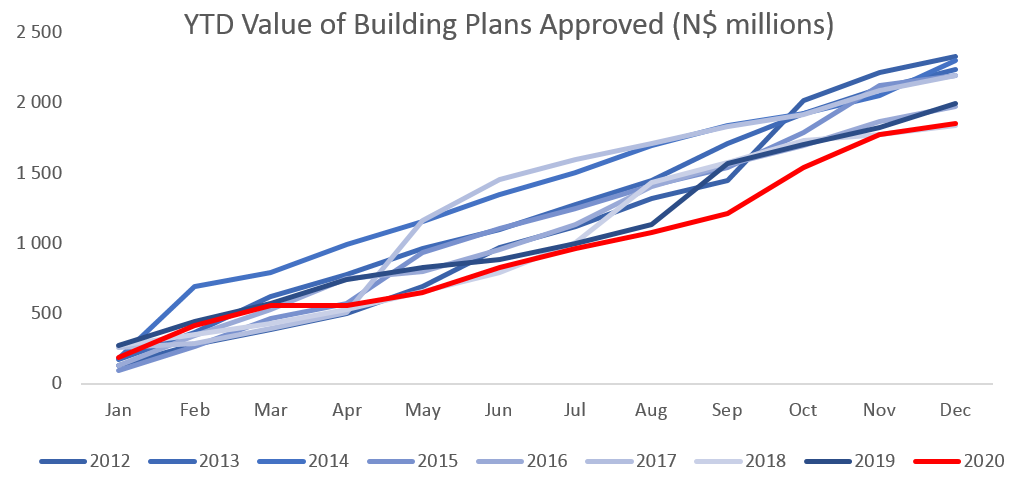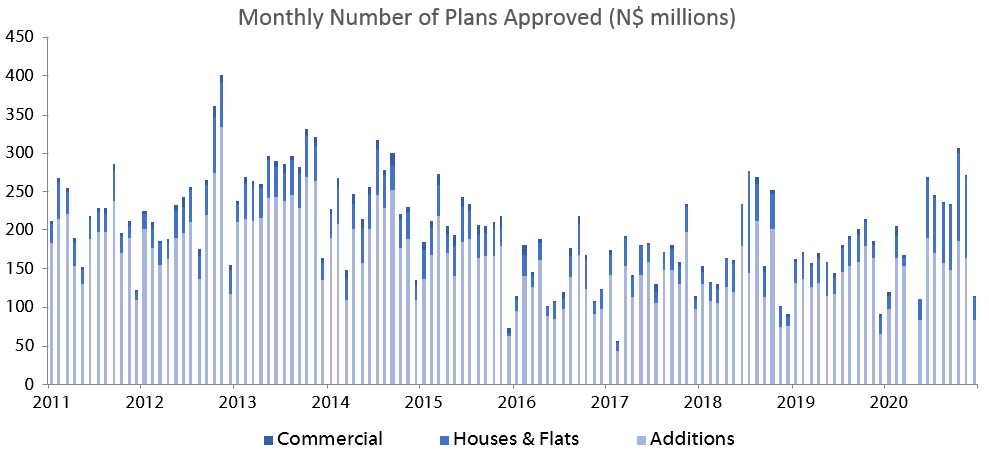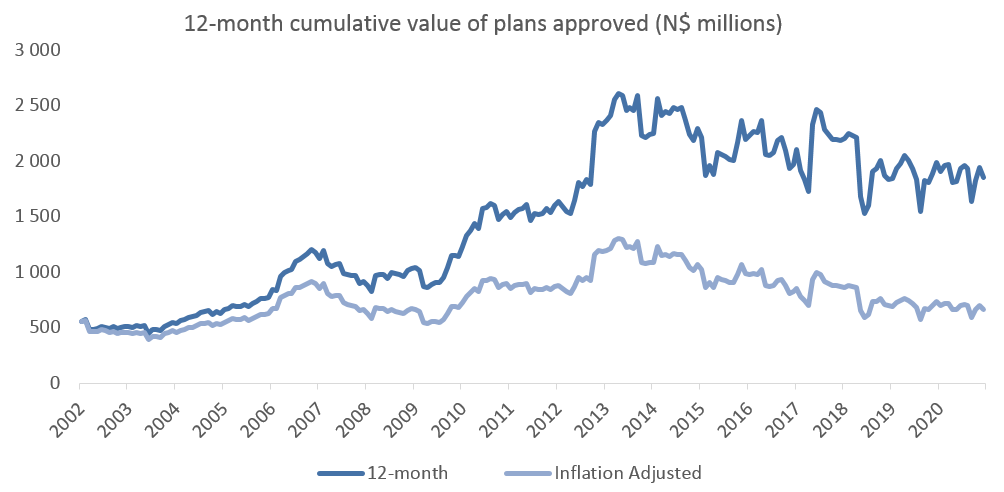
A total of 115 building plans were approved by the City of Windhoek in December, which is a 57.6% m/m decline from the 271 building plans approved in November. In value terms, approvals fell by 68.2% m/m to register N$75.4 million worth of approvals in December, compared to N$237.2 million in November. A total of 51 building plans worth N$32.0 million were completed during the month, representing an increase of 13.3% y/y in number, but a decline of 12.0% in value of completions. A total of 2,282 building plans were approved in 2020, 250 more than in 2019. However, in value terms approvals fell by 7.0% in 2020, declining from N$1.99 billion in 2019 to N$1.85 billion in 2020.

Additions to properties once again made up the majority of building plans approved in 2020. Of the 2,282 building plans approved in 2020, additions accounted for 1,601 of these approvals, 29 fewer than in 2019. In value terms, approvals of additions for the year declined by N$78.3 million or 10.1% y/y. The value of additions approved has been contracting for the past five years, with a decline of 10.1% recorded in 2020 following the 16.3% contraction in 2019. 84 additions were approved in December, 81 fewer than in November and 74.9% lower in value terms at N$23.9 million. During the year, 886 additions have been completed to a value of N$454.1 million, a drop of 30.5% y/y in number and 34.1% y/y in value terms.

New residential units were the second largest contributor to the total number of building plans approved with 640 approvals registered in 2020, 285 more than in 2019. In value terms, new residential units approved increased from N$640.8 million in 2019 to N$823.5 million in 2020. On a month-on-month basis, the number of new residential approvals decreased by 71.2% to 30 in December, while the value of approvals declined by 80.9% to N$25.3 million. 30 Residential units valued at N$16.8 million were completed in December, bringing 2020’s total number to 720, up 133.8% y/y, and value to N$1.04 billion, up 155.0% y/y.

A total of 41 commercial and industrial units were approved in 2020 compared to the 47 approved in 2019. In value terms, commercial and industrial approvals fell by N$244.5 million or 42.5% for the year in 2020 from the N$575.6 million reported in 2019. In December, only 1 new commercial unit valued at N$26.2 million was approved, 1 fewer than in November, but a 162.2% m/m increase in terms of value. 1 Commercial and industrial building was completed in December, bringing the year’s total to 12, a 58.6% decline from 2019. In value terms, N$39.7 million worth of commercial and industrial units were completed in 2020, representing a contraction of 78.6% y/y.

The number of building plans approved in 2020 rose by 12.3% compared to 2019, but the cumulative number of plans remains down 32.9% from its peak in 2013. The cumulative value of approvals fell 7.0% y/y to N$1.85 billion in 2020 and is down 29.0% from the peak in 2013 in nominal terms. Building plans approved is a leading indicator of economic activity in the country and the above data implies that the Namibian economy is still showing signs of hardship. The significantly lower commercial building plan approvals in 2020 is another sign of this and indicate that most businesses are not planning on expanding their existing operations.












